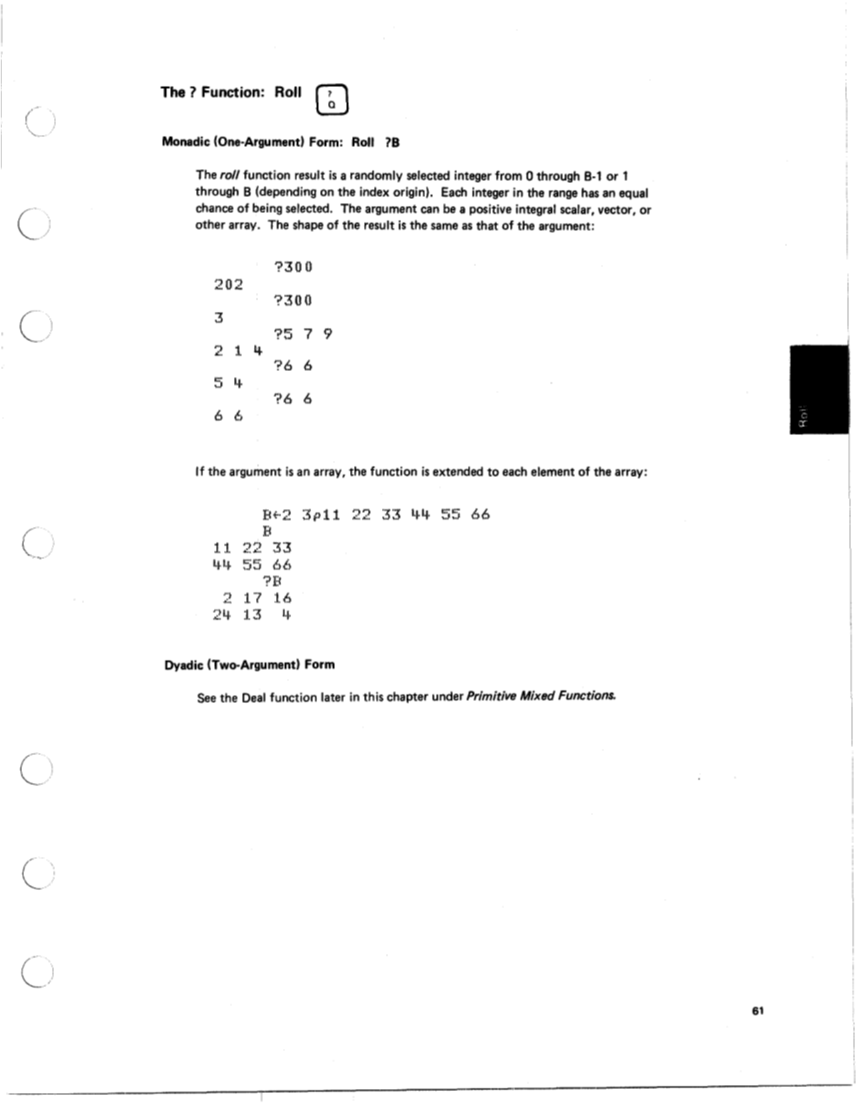Dyadic (TweArgument) Form: Binomial AIB
The binomid function result is the number of different combinations of argument B
that can be taken A at a time. The result of A!B is also the (A+l)th coefficient of
the binomial expansion of the Bth power. The arguments can be numeric scalars,
vectors, or other arrays. The argument must be the same shape, unless one of the
arguments is a scalar or any single-element array. Arguments of the same shape
have the same shape result:
2!4
6
W X Y Z -Argument B
2 ! 6
is
a
1
3
3 ! (1
0 ! 3
2 ! 3
The combinations of
argument B taken
./
-
argument A(2) at a time
If one argument is a scalar or a single-element array, the shape of the result is the
same as that of the other argument. The single element is applied to every element
of the multielement array:
60
The binomid function result is the number of different combinations of argument B
that can be taken A at a time. The result of A!B is also the (A+l)th coefficient of
the binomial expansion of the Bth power. The arguments can be numeric scalars,
vectors, or other arrays. The argument must be the same shape, unless one of the
arguments is a scalar or any single-element array. Arguments of the same shape
have the same shape result:
2!4
6
W X Y Z -Argument B
2 ! 6
is
a
1
3
3 ! (1
0 ! 3
2 ! 3
The combinations of
argument B taken
./
-
argument A(2) at a time
If one argument is a scalar or a single-element array, the shape of the result is the
same as that of the other argument. The single element is applied to every element
of the multielement array:
60









































































































































































































































